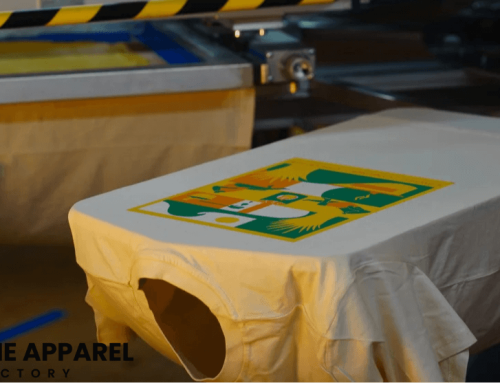Don’t just survive winter — thrive in it. The winter season brings snow, ice, and very cold air. As per NOAA’s Climate Prediction Center, the Upper Midwest and Pacific Northwest will experience possible cooler-than-average temperatures in this winter season. This signals us to get ready for the 2025’s cold wave in the United States with all our winter gear. You need the right winter clothing to stay warm and safe. This guide gives you a complete checklist of essential winter apparel. We will categorize everything you need for maximum warmth.
We have much more to share about your cold weather gear. You can learn about materials, layering, and how to care for your new items. Look for our links to other helpful guides as you read.
The Core Elements of Winter Comfort
Getting ready for cold weather is all about smart planning. It is more than just wearing one big, thick coat. The secret to staying warm is wearing layers. Each layer has a special job to keep you cozy.
One layer keeps you dry by moving moisture away from your skin. Another layer traps your body heat like a blanket. The last layer protects you from wind and rain. This protection is key to feeling comfortable outside. Smart layers are the best way to handle the cold weather.
Want to master the technique? See our guide on How to Master Layering for Winter: The 3-Layer System Explained.
Essential Outerwear: Jackets, Sweatshirts, and Hoodies
Outerwear is your first line of defense against the cold. This is the biggest part of your winter clothing collection. It must be waterproof and windproof for best results. This layer is called your shell or protection layer. Good outerwear, whether jackets or sweatshirts and hoodies, uses great insulation to trap your heat inside.
Key Types of Outerwear
Choosing the right outerwear depends on your climate. Each type of coat offers different levels of warmth and coverage.
Parka Jackets
A parka jacket is for the most extreme cold weather. It is usually long, reaching down to your thighs. It has a hood often lined with warm fur or fleece. Look for high levels of synthetic or down insulation. This is a must-have for very chilly season climates.
Sweatshirts
Sweatshirts are a versatile piece of mid-layer outerwear, usually made from thick cotton jersey knit or fleece. They are excellent for layering over a base layer in moderate cold or worn casually indoors. They provide warmth without the bulk of a full jacket. Sweatshirts also come in different styles which include crewneck sweatshirts and hooded sweatshirts. While not typically waterproof or windproof, they are a cozy option for mild to cool weather.
Hoodies
Hoodies are essentially a type of sweatshirt that includes a hood, which offers extra protection for the head and neck. Like sweatshirts, they are often made from thick, soft fabric and are a key piece for casual warmth. They can be worn as a primary outer layer in cool, dry conditions or as a crucial mid-layer under a heavier coat in colder weather. Many feature a front ‘kangaroo’ pocket for warming hands or storing small items.
The durability of your coat depends on its build. Learn which materials stand up best in our Ultimate Guide to Winter Clothing Materials.
Not sure if you need a parka or a sweatshirt? Compare the different types with our blog on types of winter clothing.
Mid-Layers: Trapping the Heat
The mid-layer is the heart of your warmth system. It sits between your base layer and your outer shell. This layer is all about insulation and trapping warm air. Look for lightweight warmth in this category.
Insulation Essentials
These items are easy to take off if you get too warm inside. They should have great insulating power.
Sweaters (Wool, Cashmere)
A thick sweater is a classic winter clothing and is best for the winter season. Wool is a wonderful material because it stays warm even if it gets damp. Cashmere is super soft and provides incredible warmth without bulk. Sweaters come in many styles for both women’s winter clothing and men’s winter clothing.
Fleece Jackets/Pullover
Fleece is a synthetic material that is very light. It traps a lot of heat and is a very popular mid-layer choice. A fleece jacket or pullover is a simple way to add thermal warmth. It is also quite breathable, which is a bonus.
Vests (Puffer or Fleece)
A vest is a great item for slightly less cold days. It keeps your core body warm while leaving your arms free. Puffer vests have down or synthetic fill for warmth, which is a perfect winter clothing option. Fleece vests offer a light and comfortable layer.
Base Layers: The Foundation of Warmth
The base layer is the first thing you put on your skin. It is the most important layer for staying dry. You want a fabric that is moisture-wicking. This means it moves sweat away from your skin quickly. Staying dry helps you stay warm in the chilly season.
Tops and Bottoms
This category is also called thermal underwear. They should fit snugly against your skin. This close fit is what makes them great at their job.
Thermal Shirts and Leggings
These are long-sleeve shirts and long underwear bottoms. Look for materials like Merino wool or special synthetics. Merino wool is naturally good at moisture-wicking. Synthetics are known for their fast-drying abilities and breathability. This is the true foundation of your winter outfit.
The Critical Details: Protecting Your Extremities
Your head, hands, and feet lose heat very fast. They are your extremities. Protecting them is a key part of your total winter apparel. These smaller items are just as important as your coat.
Head & Neck
Protecting your head can stop a lot of heat loss.
Headwear
It is important to cover your head in cold weather. Simple headwear options like beanies or thick winter hats are essential. They should cover your ears completely for best comfort.
Scarves/Gaiters
A scarf protects your neck and lower face from the cold wind. A neck gaiter is a closed tube of fabric. It is easy to pull up over your nose and mouth.
Hats, gloves, or scarves—which one should you prioritize? Get the full breakdown and recommendations in The Best Accessories to Wear with Your Winter Clothing.
Preparing Your Winter Wardrobe
This list provides a great start for your winter season shopping. We covered the essentials for great winter clothing for men and winter clothing for women. Remember that quality winter apparel is a true investment. Good gear will last many years and keep you warmer. Buying the best winter clothing brands can save you money later.
To ensure your gear lasts, read Winter Apparel Care 101: Washing, Drying, and Storing Your Cold-Weather Gear.
Ready to shop? See our advice on Budgeting for Winter Gear: Affordable vs. Investment Pieces.
Published on:
October 23, 2025





